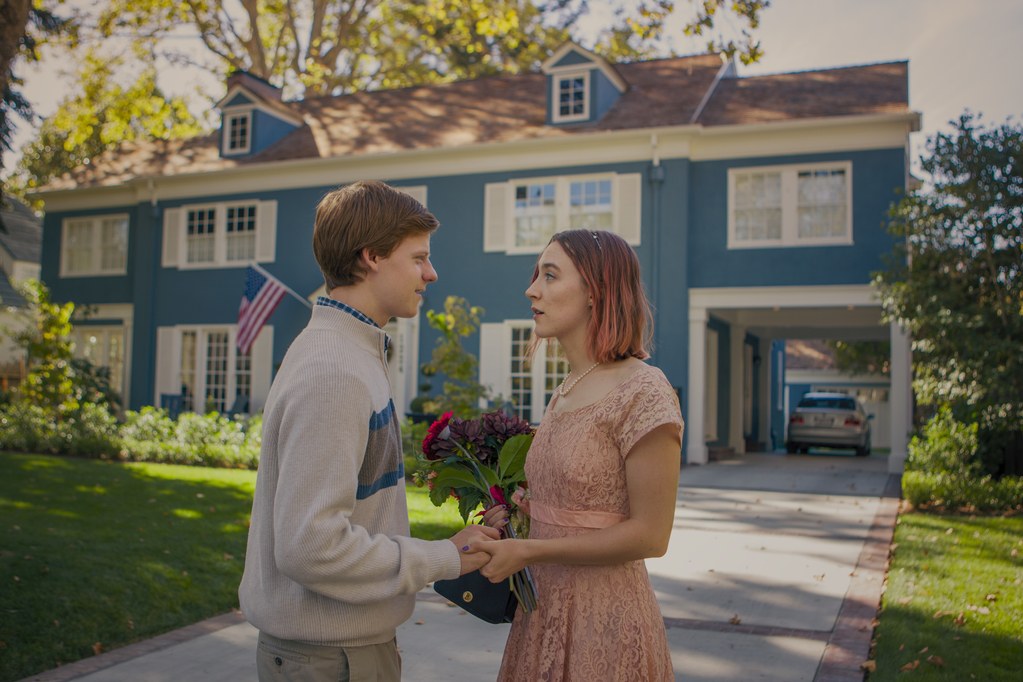It finally feels like popular culture is celebrating women who are unapologetically themselves, or “a little too much”. Patriarchy smashing, shattering loudness, and freed sexuality are all in, honey.
And Greta Gerwig is all for it.
Though she has denied any auto-biographical factors, the story explores familiar territory as she herself grew up in Sacramento, attended Catholic school and moved to New York City. Yet Gerwig has channelled the nostalgic; as well as the all-too-familiar feeling of self-exploration through the conjuring of a ‘know-it-all-that-has-all-the-answers’ protagonist, Lady Bird. Gerwig even stating herself in a recent interview:
“I never think about female characters as likeable or unlikeable. With all my characters- not just with female characters- but with every single character in the film. There are no villains. I think everybody is genuinely doing the best with what they’ve got”.
Lady Bird is a classic ‘coming-of-age’ tale, capturing the universality of the teen experience and its sometimes-comedic obstacles. Yet, Lady Bird avoids clichés in a well-trodden territory by giving the viewers a layering down, it so intelligently and naturally touches on mental health, sexuality, relationships. Lady Bird also finds it’s originality by changing something key in the structure, the story of the film unfolds from the perspective of “the teen” and “the mother learning to let go”. This results in a mother-daughter love story between Saoirse Ronan (Lady Bird) and Laurie Metcalf; as the mother she is an ‘Every Woman’, trying to hold her family, her job and her life together while under phenomenal stress. What is most compelling about their relationship is how antagonistic it looks on the surface yet how bonded and attentive they are to one another, it’s a good exemplification of what love actually looks like; it’s not always pretty and it isn’t perfect, but it perseveres.
The film itself is a ‘period piece’ of sorts, the period piece being the not-so-distant year of 2002. To capture this sense of current contemporary piece within cultural history, there was an aim to give the film “the visual quality of a memory”. As well as being shot on a digital camera, or a filter as such, there were careful details within every aspect of the period to remind us of the early 2000’s at every turn. From the costumes (Dr. Martens Mary Janes? Shell necklaces? Layered white tees?) to the music of Dave Mathews Bands’ Crash Into Me (2002) to including the key events of the war in Iraq playing in the background, to the pastel colours shown throughout, the overall feeling of the film is overtly nostalgic.
Overall, this “love letter to Sacramento” ensures that ‘everything will turn out alright’ in the end and that it’s okay to not have everything figured out. Lady Bird may resonate with people more due to the context of its release. It comes at a time when women are openly challenging the kinds of male stories that typically dominate the screen. We basically never see this kind of protagonist: a young woman who really thinks she’s special. When you’re a teenager, you do basically think you’re special, you think that you’re going to go far and achieve everything you want. Especially during this politically contentious era, it is refreshing for so many people to agree on the quality of a film that is written and directed by a female with a female lead. A flawless and mesmerizing film.
By Ashley Morris

